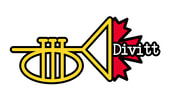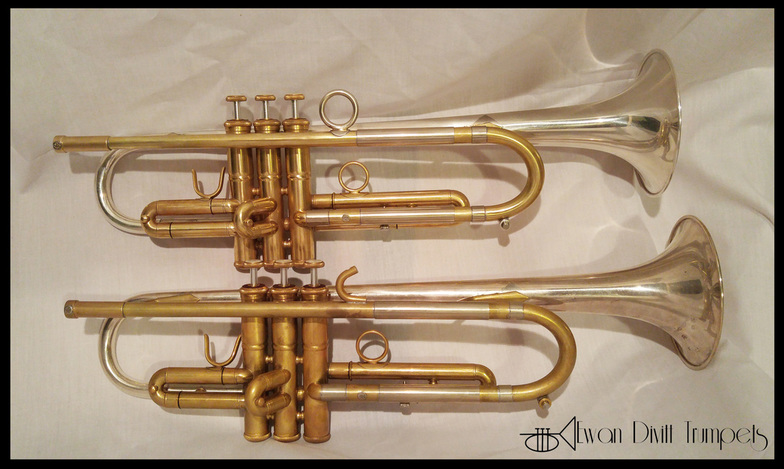|
Leadpipes have a very important role in the creation of the sound of a trumpet. They set up the intonation on the horn, affect the feel and slotting, and also affect the tone. Currently, I have designed 3 different tapers that cover the spectrum in terms of taper length and taper size. From my experiments with these tapers, I will be able to narrow down what characteristics they each produce, and then I will design new tapers to try to improve on the first 3. With the aid of my new CNC lathe, making new leadpipe mandrels will be much faster than it used to be, which will allow me to quickly see the results of my ideas. Needless to say, I am very excited to get my CNC gear setup and tested! Below is a run through of the process I use to make my leadpipes. There are a few different ways to make a leadpipe, and my way is a traditional tube drawing process. Other ways of making a leadpipe are to form it from a flat sheet and braze it together with a seam, or machine a piece of brass rod using custom made drill bits that are extra long, and tapered to the leadpipe specs.
0 Comments
Over my career, I have played many trumpets. I started on an Olds Ambassador and then moved on to a Getzen Eterna 900H. After that a Schilke B3L, a Bach 37 Strad and then two incredible Calicchios. My goal as a trumpet maker is to make a horn that is responsive, has good feedback, has a wide colour palette, and most importantly feels like you are not playing a trumpet at all. The balance between a horn that gives lots of feedback and one that projects across an audience is vital, not only to being able to survive long gigs, but also to developing your personal voice on the instrument. The horn should be dark and mellow when you want it to be, but also should be able to shoot fireballs on command (musically, not literally of course...). Below is a photo of my two prototype trumpets. Both have their own characteristics, but also play wonderfully. These prototypes have silver-plated Bronze bells. My production bells are 5" unplated bronze bells handmade for me in Germany by a very reputable bell maker. I currently do not have the facilities large enough to house bell making machinery, so until I can expand, I will be using bells that are made to my specs. One of my other goals on this journey is to learn more about photography and video making so you can get a great view in to the process of trumpet making. Videos of each step of the trumpet making process will be coming shortly. See you soon,
Ewan Hello Everyone. Welcome to the Divitt Trumpets blog.
My goal with this blog is to document the journey I am taking in becoming a trumpet maker. I plan to do a write up about what I worked on each day that I work on making trumpets. I will talk about the successes and failures that I encounter, as well as my goals and plans for my instruments and the company. Let me tell you a little about myself. My name is Ewan Divitt. I have been playing trumpet for almost 20 years. I have a degree in Jazz Performance from Humber College, one of the top contemporary music schools in Canada. During my time at Humber I had the privilege of studying with some of Canada's finest musicians, and I was incredibly inspired by all of the amazing creative people I met. After Humber I studied Musical Instrument Repair at Keyano College. It is there that I found that I am good with my hands, and enjoy making things. I also started modifying trumpets while I was at Keyano. I have been working as a Brass Repair Technician for 7 years and a freelance trumpet player for over a decade. Please follow me on my Adventures in Trumpet Making, and if you have any questions please don't hesitate to send me an email or contact me on Facebook. Sincerely, Ewan Divitt |

